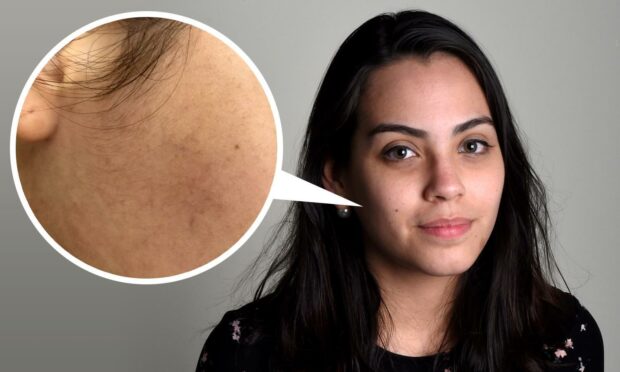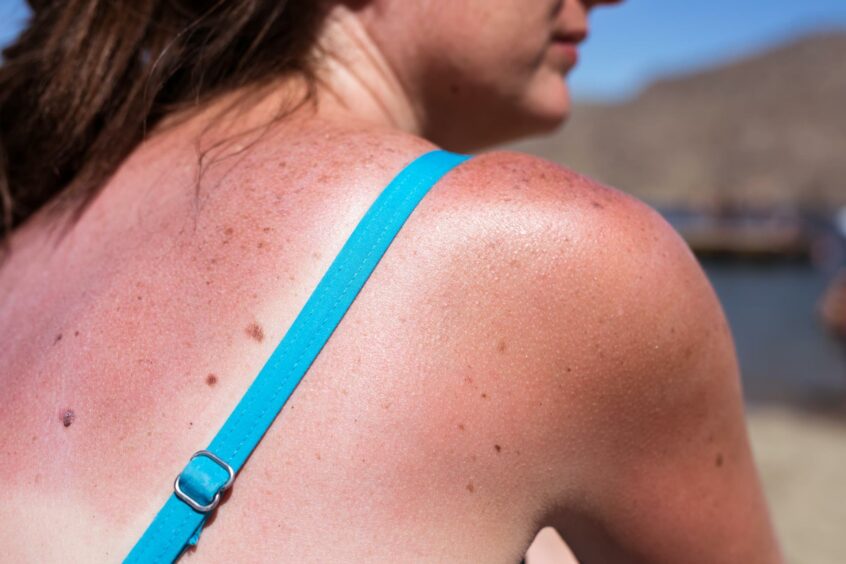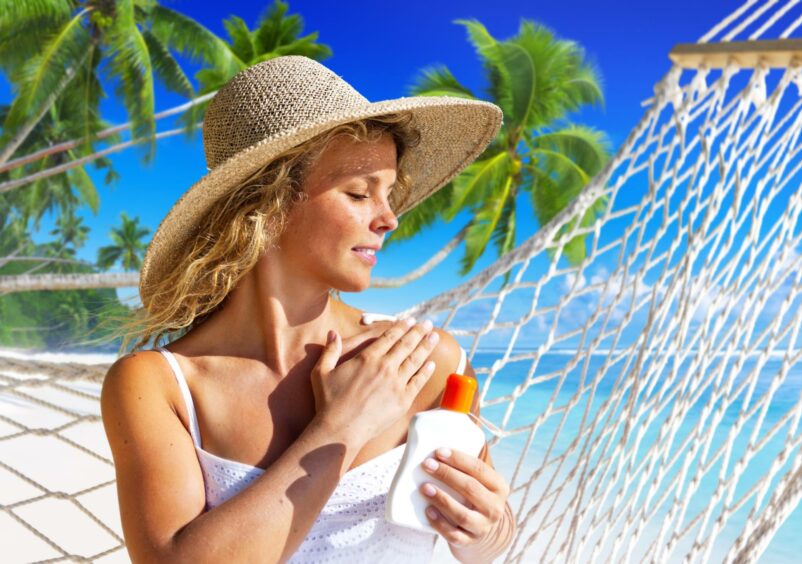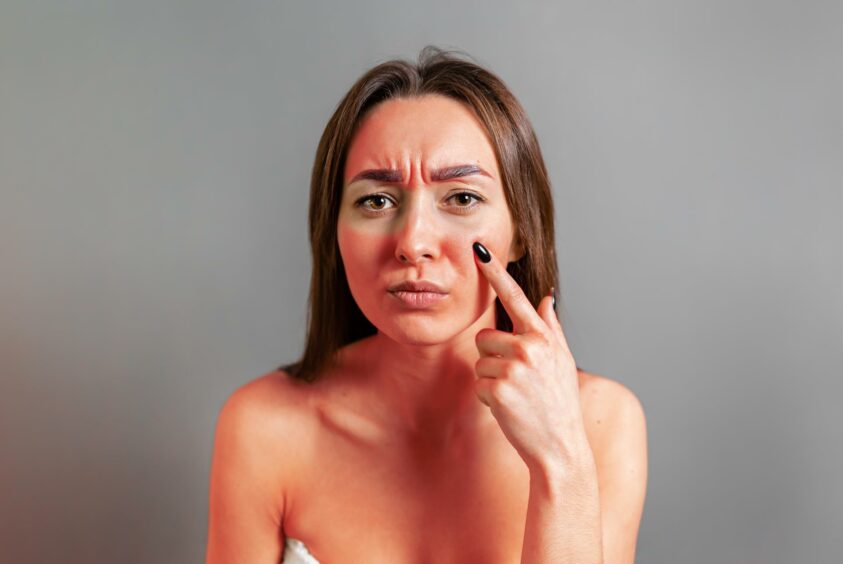Growing up, the sun was my constant companion and it goes without saying that I took its warmth for granted.
However, over the years I learned that the sun is also capable of being just as much a foe as it is a friend.
And I have a blemish from my bad judgement to prove it.
Which is why new survey results by charity Melanoma Focus are so concerning.
Of the 1,003 people surveyed, 35% of Scots said they’re planning a hot summer holiday this year – but just over half plan on wearing sunscreen.
Here’s why adapting this attitude can be potentially life-threatening.
Wanting a tan is not a good enough reason to not use SPF
For many, this will be the first time they will holiday abroad since the Covid-19 pandemic.
And it’s no surprise 86% of Scots who took the survey have chosen a hot climate destination.
Melanoma Focus also said nearly half of people (42%) across the UK admitted they do not regularly wear sunscreen when jetting off to a hot country.
Their reason? They don’t expect to burn or they prefer to get tanned.
According to the charity, one in 36 men and one in 47 women in the UK will be diagnosed with melanoma skin cancer in their lifetime.
It is currently the most common form of skin cancer in the UK, but the vast majority of cases are preventable – starting with simply applying a sunscreen of SPF 30 or up every two hours.
‘I have been burned before – quite literally’
I spent 19 years of my life under the hot sun on the Caribbean island of St Maarten.
Sunscreen and sun safety wasn’t common or talked about much or at all growing up. It was viewed as an inevitable and constant variable you just had to learn to live and deal with.
You planned your day around when the sun was the tamest.
There would be no way you’d look at the clock at 1pm and decide now would be a good time to run errands in town or pay your water bill.
Before moving across the pond, I didn’t understand the love many had for a cloudless, sunny day.
To me, the sun and its balmy temperatures were an obstacle and a hassle. Depending on how unrelenting the weather was on any given day, especially if it was over 29C, it probably meant I’d be in a foul mood.
No one enjoys sweating in their jeans (or school uniform) and sitting in an aircon-less room all day.
And then I experienced my first winter nearly a decade ago. A blizzard where temperature plummeted to -17C, coupled with trademark Dutch drizzle, and I suddenly understood.
The sun was to be worshipped.
Wrapped up in my duvet, refusing to leave my bed after I pushed it up against the heater, I vowed to savour the warmth every time when I went home.
However, I have been burned before. Quite literally.
On reflection, it’s hard to believe knowing what I know now that I spent so many years not applying sunscreen even to walk to school
‘Sunburn happens to tourists – not me’
About 10 years ago, I was taking part in an annual island-wide beach clean-up. This usually meant spending the morning and most of the early afternoon picking up litter up and down the coastline.
Never, in my back-to-back years of volunteering, did I ever think of slathering on some SPF.
But because of my skin type, there had been very rare occasions I’ve ever had an actual sunburn. A red nose and the pink cheeks that would be tanned by the next morning were never a sign for me to think about sunscreen.
This might be why I never took it seriously.
“Sunburn happens to tourists, but I live here,” I would reason with myself.
Well, I was wrong. I could burn – and badly.
I made the poor judgement call of spending the day totally unprotected under the sun. After hours exposed cleaning up the beach, some friends and I spent the more time outside of their home perched on the hillside.
My skin ached and was hot to the touch for days after that. I peeled badly and I was left with a very permanent reminder of that day. A sunspot on the right side of my face which gets even darker when the summertime rolls around.
And it all could have been prevented if I took some very easy, defensive measures.
Sunscreen is for everyone
Wearing and reapplying some SPF 30+, keeping to the shade where possible, wearing suitable clothing that covered my shoulders.
Sunscreen is for everyone, regardless of your skin type, and it should be worn all year-round – even if you think the sun can’t get to you because it’s overcast and grey.
A sunspot is just one of the many side-effects of overdoing your time in the sunshine.
The warmth is glorious, but it can be as cruel as it is giving.
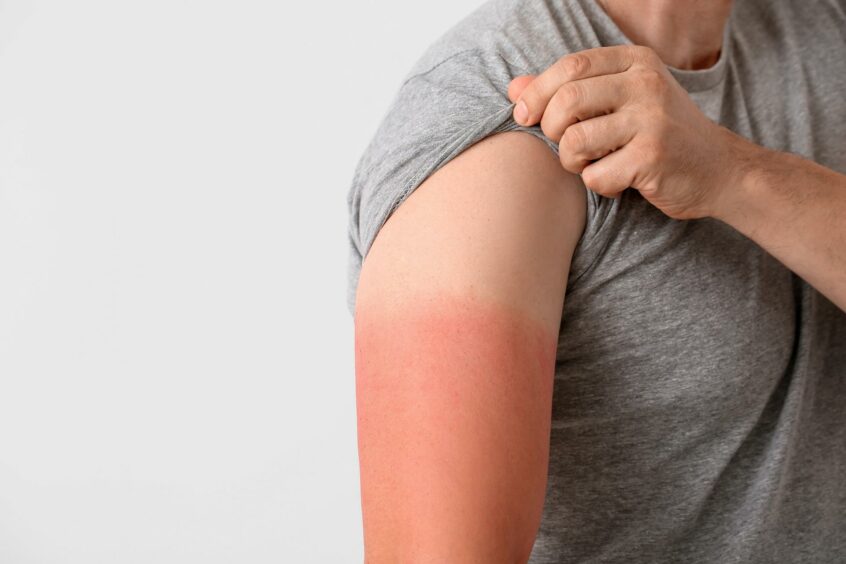
So, to 42% surveyed and the ones who also forego sunscreen for a tan while on holiday – heed my warning.
Slather on that SPF, stay hydrated and befriend the shade.
